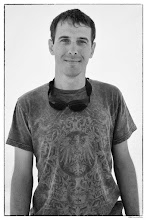 The new Tracker2fc prototype boards came in late last week, and on Friday I built two of them and got one installed in a sample of a low-cost 5-watt synthesized UHF transceiver module. It's working great so far, aside from some minor mechanical fit issues. And I think maybe I broke the antenna lead on this sample, but the other one had the modem header installed wrong and would need some work to get the board to fit.
The new Tracker2fc prototype boards came in late last week, and on Friday I built two of them and got one installed in a sample of a low-cost 5-watt synthesized UHF transceiver module. It's working great so far, aside from some minor mechanical fit issues. And I think maybe I broke the antenna lead on this sample, but the other one had the modem header installed wrong and would need some work to get the board to fit.This system is the closest I've come to what I envisioned for the T2 a few years ago when I first started thinking about the OpenTRAC protocol and how a tactical SAR tracking system ought to work. A lot of that thinking was done on long walks through the woods at Vandenberg - I can remember where I was on the trail when I decided on certain critical features.
There's still a lot to be done before I can achieve that ideal, but at least it's a step in the right direction. The next big (and rather expensive) step is going to be getting the VHF version going. The vendor is sure they can do it, but I'm doubling their time estimates in my own planning. I might have samples to show at Dayton, but I'm not holding my breath.
I was planning to get some more debugging work done on the T2's support for the Garmin fleet management interface tonight, but when I do too much coding late at night I get wired and can't fall asleep for hours. And when I do sleep, I dream in C code and schematics.
Tomorrow I've got an appointment to check out some commercial spaces in the business park across from the airport. Things are getting too crowded here. One of the units is actually about twice the size of what I was looking for, but it might work after all. FTI needs to find a new office too, and since it looks likely that I'll be doing some consulting work with them on a regular basis for another year or two, sharing a larger place might be a good option - I'll be able to cover both without a lot of running around. FTI needs more office space and I need more warehouse space, so I think it'll work well. And if they leave town when the project is over, I can take over the remaining space or it can be split back into two units again.
I hadn't really planned on getting back into Air Force stuff again, but there's not really anyone else who knows the systems well enough to handle the modernization effort. And besides, there's a lot of satisfaction in knowing that my systems (ok, not solely my systems, but I put more work into them in the last decade than any other three people combined) are getting used on the Shuttle program, and maybe eventually Constellation as well - and knowing that we did on a shoestring budget what Lockheed Martin couldn't do for tens of millions.






